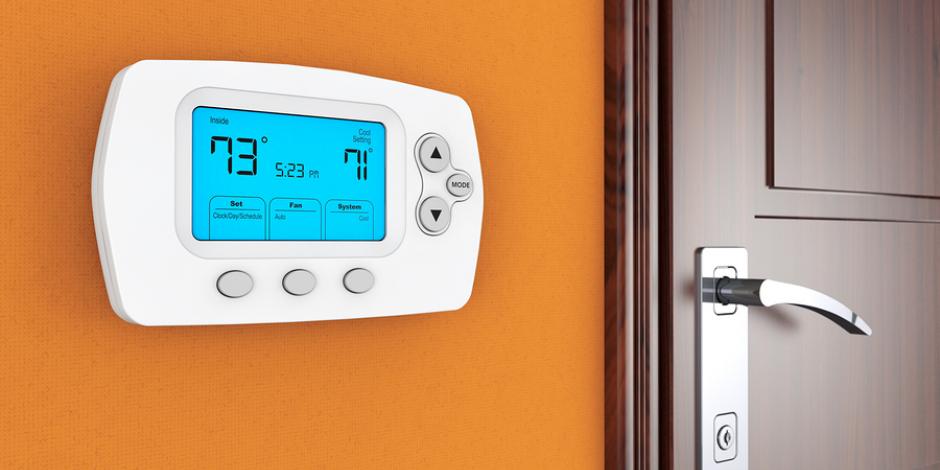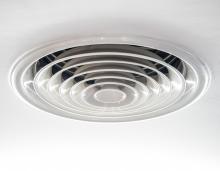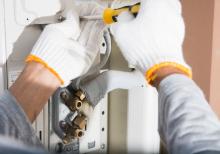
As we begin the transition from the cooling season into the heating season, many families begin to think about the impact soaring energy costs will have on their budget this winter. While the weather outside can certainly be unpredictable, the climate inside your home doesn’t have to be.
Controlling your comfort inside is much simpler to do, and less costly, when you are using a programmable thermostat. In fact, the Energy Star government website (energystar.gov) claims, “The average household spends more than $2,000 a year on energy bills – nearly half of which goes to heating and cooling.” They suggest that, “you can save about $180 a year by properly setting [your] programmable thermostat and maintaining those settings.”
Many homeowners do not appreciate the important part the thermostat plays in keeping you comfortable. Responsible for monitoring and regulating the temperature inside your home, your thermostat plays a significant role in how efficiently your HVAC system is running. With a programmable thermostat, you can reduce the demand placed on your heating and cooling units by allowing the temperature settings to rise or lower automatically, depending on the heating or cooling needs of the season and requirements of the activities in the zone being controlled.
Because of a programmable thermostat’s famed “set it and forget it” benefit, people who are regularly away from home during set times throughout the week are ideal candidates for using a programmable thermostat.
But, with several models available, how to do you know what thermostat is right for you?
Choosing a Programmable Thermostat
When you decide to buy a programmable thermostat, you need to consider your schedule. Programmable thermostats come in three different models: 7-day, 5+2 day, and 5-1-1 models.
7-Day Model
This model is great for persons with an irregular schedule. With a seven-day setting, you can customize your comfort settings fore each day of the week. For example, if you have a fluctuating work schedule and the time you leave and return home from work on Monday, Tuesday and Thursday is different from Friday & Saturday, you can create separate temperature schedules for each of those days - as well as your days off.
5+2 Model
For those with a fairly regular schedule, a 5+2 model works great. You can program your thermostat for Monday through Friday and keep a separate setting for Saturday and Sunday.
5-1-1 Model
This model is similar to the 5+2 model, only instead of the same setting for your weekends, you can program Saturday and Sunday separately.
Still not sure if they’re right for you?
Consider the following scenarios and energy saving benefits programmable thermostats have to offer.
True or False?
It costs more to heat a home back up after setting the thermostat at a lower temperature while you’re away for the day (or to cool the house back down after raising it).
True. The longer your house remains at the lower temperature, the more heat you save.
The higher you turn up your thermostat, the faster your house will warm up.
False. Furnaces and Air Conditioners put out the same amount of heated or cooled are regardless of how high the thermostat is set. The variable is how long it must stay on to reach the set temperature.
If I don’t keep the house warm enough, the kids will kick off the covers and get cold.
False. With the exception of newborns, children can regulate their body temperature just like adults, so their temperature needs won’t be any different from yours.
Energy-saving benefits
The more you set back, the more you save. If you have a medical condition that requires special temperatures, be sure to check with your doctor. It is also suggested that if you have had problems with pipes freezing during extremely cold weather, you should correct the problem before setting back.
| Set Back |
8 Hours per day |
16 Hours per day | 24 Hours per day |
| 5° | 5% | 10% | 15% |
| 7° | 7% | 14% | 21% |
| 11° | 11% | 22% | 33% |
| 13° | 13% | 26% | 39% |
Recommended thermostat settings
| Winter | Sumer | |
| When you're home: | 68° | 78° |
| When you're not at home: | 55° | 85° |
When it comes to saving on energy costs, programmable thermostats are a great way to go. It’s also a good idea to consult with a professional on how to optimize efficiency during your next maintenance visit.
Want to know more? Contact us. Interested in other money saving tips or tricks to get the most from your home’s HVAC? Check out our other blogs.








